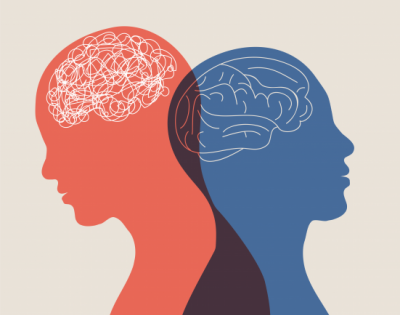
The body has an amazing ability to heal itself from trauma. This fairly new type of therapy uses a client's visual field to uncover unprocessed trauma, negative emotions, and pain.
Identifying and utilizing “brainspots” can allow us to access deeper emotions and traumatic memories that we maybe didn’t even know we were hiding from ourselves. Digging those experiences out of our body’s memory can help us face them head on and process them the right way.
To put it more simply, your brain can tell you how you’re feeling based on where you look.
What is Brainspotting?
Brainspotting, which was discovered in 2003, locates points in a client’s visual field to help them access unprocessed emotions in the subcortical level of the brain. This is accomplished by guiding a client’s gaze with a pointer of some sort and identifying sources, or spots, that bring negative emotion. These brainspots activate traumatic memories or emotions. The uncovered information allows therapists to access emotions on a deeper level and target them in a more specific way.
Brainspotting gives the therapist access to both the brain and the body to help process deep-rooted emotions. Essentially, brainspotting comes from the thought of “where you look affects how you feel.” The goal is to help people access, process, and overcome trauma, negative emotions, and pain. This is done by bypassing the brain's conscious thinking, which is addressed in talk therapy. Brainspotting gets at the deeper, more emotional, and body-based process from the subcortex part of the brain. This brain activity organizes itself around an eye position that a client has a strong reaction to.
How is Brainspotting different than talk therapy?
Once a brainspot is located in the client’s visual field, the client will focus on the specific area of concern while keeping their gaze on a focused point. The brainspotting therapist’s job is to allow your brain and body to do the work. Therefore, a brainspotting therapist does not talk as much as in traditional therapy, because talking can disrupt the brain’s ability to process.
Who can benefit from Brainspotting?
Those who experienced either physical or emotional trauma may benefit from this unique kind of therapy. Brainspotting has been shown to be an effective treatment for those experiencing:
- Various forms of trauma
- Anger issues
- Anxiety
- Depression
- ADHD and attention issues
- Phobias
- Addictions and substance use
- Chronic fatigue/chronic pain
- Impulse control
- Performance issues
- Mental health issues and more
Bottom line: Brainspotting can be an effective treatment for anyone who has an active nervous system. Brainspotting is useful for children and adults. The foundation of brainspotting is relational, and successful treatments occur when the therapist is in tune with the client. Brainspotting is designed to be a therapeutic tool that can be integrated into many therapy modalities
Sources:
https://brainspotting.com
https://www.goodtherapy.org/learn-about-therapy/types/brainspotting-therapy




